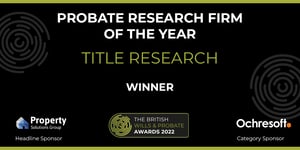
What is escheatment?
Apr 16, 2024 11:15:00 AM
All US states require brokerage firms and financial institutions to report unclaimed or abandoned accounts. Before the account can be considered unclaimed or abandoned, the brokerage firm or financial institution must make a diligent effort to locate the owner. If they are unsuccessful in their attempt, they must report it to the state where the account is held. The state then claims the dormant account through the process of escheatment.
Escheatment is the process by which the state claims and becomes the owner of the account. Common assets that escheat are bank accounts and shares, including uncashed dividend payments.
Although there are no USA wide figures for the value of escheated funds, individual state records reveal a wealth of unclaimed assets. As of December 2020, New York State holds $16.5 billion in unclaimed funds, $8 million of which is for one estate, and South Dakota reports a further $600 million.
The escheatment process
The escheatment process takes place when a US account becomes dormant for a period that is specified by state law, typically between three to five years. At that point, the ‘personal property’ is transferred to the appropriate State Comptroller’s Office and usually liquidated. Therefore, a claim for escheated assets becomes a claim for cash monies, held by the state.
Reclaiming escheated funds
As a first step, we recommend updating the registered address on the account to one where correspondence will be dealt with, such as your office address. This can be done as soon as there is a UK Grant of Probate or Letters of Administration for the estate. It is also best practice to cash any dividend cheques into an estate account and thereby maintain activity on the account.
In our experience, the process of reclaiming escheated funds from a US state is often a lengthy and protracted process. Once the initial claims request form is submitted, we often find that it takes anywhere between 60-90 days for a Case Handler to respond to the case with the second stage requirements.
Once the case has moved to this second stage of the process, we are required to submit the prescribed legal documentation. This task can vary in timescales depending on what documents are required.
How long does the escheatment process take?
After we have submitted all requested legal documents and the claim has been approved, we expect to receive notification that funds will be released within 90-120 days. This is often received by cheque to the estate.
On average, we have found that claims take approximately 18 months to 2 years for full completion, even with our extensive experience in dealing with escheated assets. We would predict that the process would take even longer for an Executor or Solicitor who is less familiar with escheatment.
Escheatment laws by state
States tend to have a dormancy period of either three or five years; a full list can be viewed here.
The main states where we deal with escheated assets are Delaware, New York, South Dakota, and Arizona. The time limit before escheatment in these states is:
-
Delaware – 5 years
-
New York – 3 years
-
South Dakota – 3 years
-
Arizona – 3 years
These time limits are for bank accounts, but some states have varying periods for different escheated assets such as cheques and wages. Many US companies are incorporated in Delaware so we most frequently deal with the Delaware Comptroller’s Office.
How escheatment affects UK shareholders
Escheatment does not exist in the UK, so it is a process that most British people are unacquainted with. With more UK companies being acquired by US entities, the chance of UK shareholders subsequently becoming US shareholders is increasing. This highlights how important it is for UK citizens with US assets to be aware of the escheatment process. As this blog outlines, it can be incredibly complicated to reclaim escheated assets and it’s important for US shareholdings to stay active.
If you’re administering a Deceased person’s estate, it can be easy to postpone dealing with US assets until a later date. Dealing with US assets can be difficult in the best of circumstances, so we highly recommend dealing with them as early as possible to avoid them becoming escheated.
How Title Research can help you with escheated assets
Title Research often assists Solicitors in the resolution of complex estate administration where US shareholdings have been escheated. If you think an estate may have escheated assets, Title Research is able to identify the state to which assets have escheated. Around 20% of cases where we are verifying, transferring, or selling US assets feature escheated shares.
We are experts at navigating the complex process of selling and transferring shareholdings in North America. We have extensive knowledge of different state processes and can maximise the value of the estate for the beneficiaries by recovering any escheated assets.
Find out more about how we can help with North American assets.
Escheatment case study
Title Research successfully claimed escheated funds from a Keurig Dr Pepper shareholding within 6 months. The Keurig Dr Pepper shares were held as part of a UK estate, despite this being a US company. In addition, our team realised that Keurig Dr Pepper did not exist in 2003, and the Deceased had died prior to this.
Watch the video below to learn what happened and how these shares came to be escheated.
If you’d like to find out more about how Title Research can help you retrieve escheated assets or administer North American shares and funds, call our Client Services Team on 0345 87 27 600 or email fill in the form below.
Topics: North America, Federal Transfer Certificate, Escheatment, US Shareholdings


